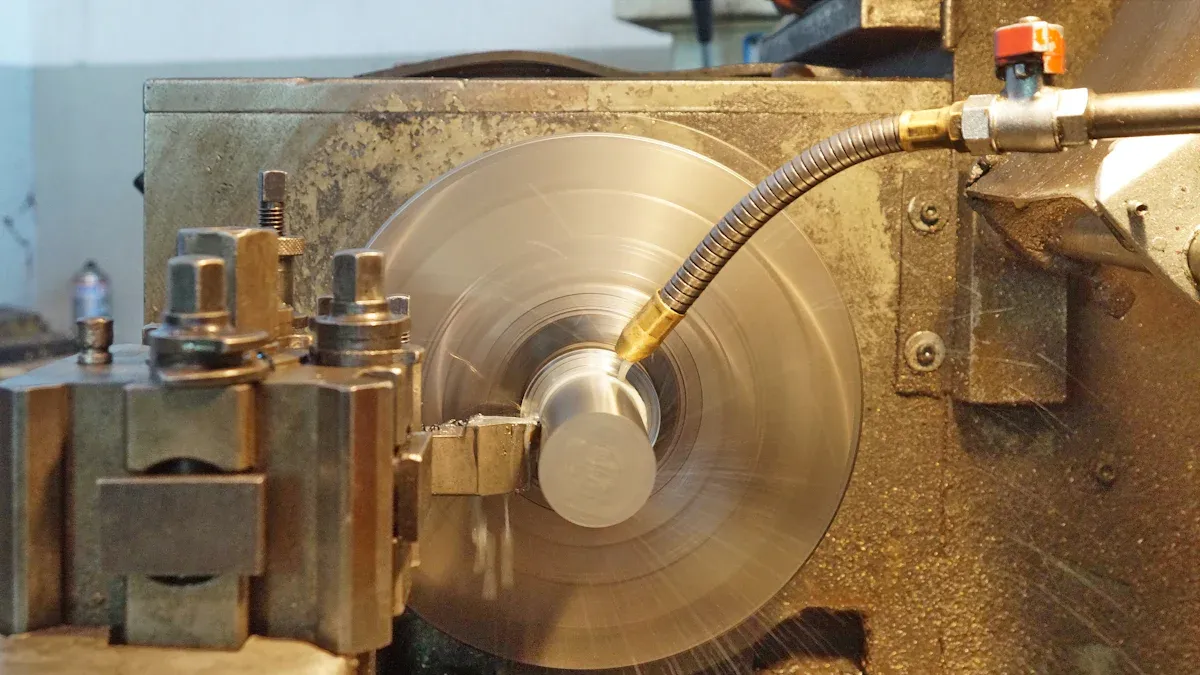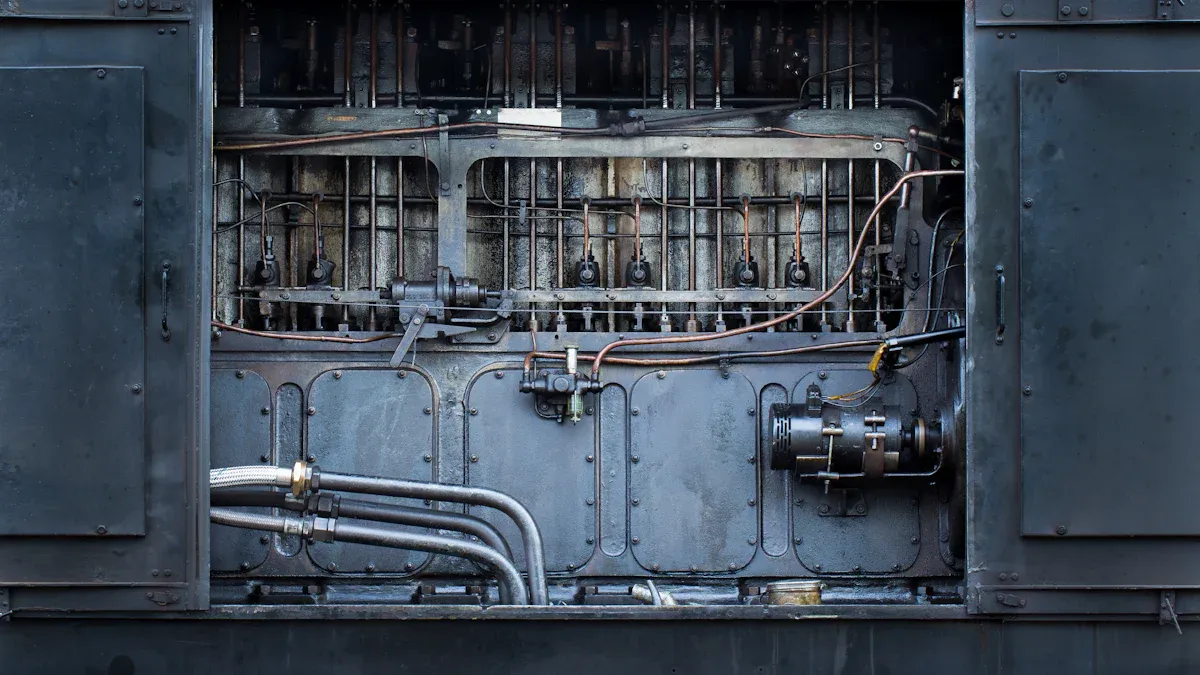
News

An induction bearing heater is a specialized tool that utilizes electromagnetic induction to effectively heat bearings. This method guarantees precise installation and removal, minimizing the risk of damage. These induction heater machines significantly enhance industrial efficiency by preventing defects and contamination. Modern innovations, such as the Portable Handheld Induction Heater, further improve safety and energy efficiency during maintenance tasks.
Key Takeaways
Induction bearing heaters warm bearings evenly using electromagnetic induction.
This helps install or remove bearings without causing any harm.
These heaters are safer since they avoid direct heat sources.
They lower burn risks and stop debris from sticking to bearings.
Induction heating saves time and cuts maintenance costs.
It makes bearings last longer and work better.
What Is an Induction Bearing Heater?

Definition and Purpose
An induction bearing heater is a device designed to heat bearings using electromagnetic induction. This process ensures that the bearing expands uniformly, allowing for precise installation or removal without causing damage. You can rely on this tool to improve the performance and longevity of bearings in industrial applications. By using induction heating, the heater eliminates the risks associated with traditional methods, such as uneven heating or contamination.
The growing demand for efficient bearing installation and maintenance has driven the adoption of these heaters across industries. Their ability to support preventive maintenance and sustainable practices makes them an essential tool in modern industrial settings. For example, the automotive industry increasingly uses induction heaters to enhance vehicle reliability and reduce breakdown risks.
Key Features of a Bearing Heater
Modern bearing heaters come equipped with advanced features to ensure safety, efficiency, and precision. Here are some key features:
These features make induction heaters a reliable choice for industrial operations, ensuring both safety and efficiency.
Types of Induction Bearing Heaters
Induction bearing heaters come in various types to suit different applications. Portable heaters are ideal for on-site maintenance, offering convenience and flexibility. You can use these compact devices in industries like automotive, where technicians need to handle bearings efficiently. For larger operations, stationary heaters provide higher capacity and advanced features, making them suitable for heavy-duty applications.
The market for these heaters continues to grow due to their versatility and effectiveness. Industries increasingly demand user-friendly and energy-efficient solutions, driving innovation in this field. Manufacturers now focus on integrating smart technologies and sustainable designs to meet evolving needs.
How Does an Induction Bearing Heater Work?
The Principle of Induction Heating
Induction heating relies on electromagnetic fields to generate heat within a conductive material. When you place a bearing inside the induction bearing heater, alternating current flows through a coil, creating a magnetic field. This field induces eddy currents within the bearing, causing it to heat up. Unlike traditional methods, induction heating ensures precise and uniform heat distribution.
A 2019 case study by JetTech Mechanical LLC demonstrated this principle. The company used a SURETHERM 10X induction heater to uniformly heat and demagnetize SKF bearings during maintenance for an NGL pipeline in Colorado. This method prevented overheating and structural stress, ensuring the bearings were installed without damage.
The Process of Heating Bearings
The process begins by placing the bearing on the heater's workpiece support. Dual temperature probes monitor the inner and outer races of the bearing. This ensures uniform heating and prevents temperature differentials that could cause cracks or fractures. Once the desired temperature is reached, the bearing expands, allowing for easy installation or removal.
Induction heaters excel in precision. They avoid localized hotspots, which can compromise the bearing's integrity. Studies show that these heaters provide rapid and consistent heating, reducing downtime and improving efficiency. By using induction heating, you can achieve better results compared to traditional electric heating methods.
Safety and Temperature Control Features
Modern induction heaters prioritize safety and precision. Features like automatic temperature control and fail-safe mechanisms prevent overheating. For example, dual probes ensure that both the inner and outer diameters are heated evenly, reducing the risk of damage. Automatic demagnetization eliminates residual magnetism, preventing debris from sticking to the bearing.
These safety measures make induction heaters a reliable choice for industrial applications. By monitoring temperature closely, you can protect high-precision bearings from structural stress and prolong their lifespan.
Benefits of Using an canroon's Induction Bearing Heater
Efficiency and Time-Saving
Using an induction bearing heater can significantly reduce the time required for bearing installation and removal. The induction process heats the bearing quickly and uniformly, eliminating the delays caused by traditional methods like ovens or blowtorches. You can complete tasks faster, which minimizes downtime and boosts productivity. For industries that rely on continuous operations, this efficiency translates into substantial cost savings.
Many modern induction heaters also feature timed heating modes. These modes allow you to heat multiple bearings in succession without manual intervention. This automation ensures consistent results and further reduces the time spent on maintenance tasks.
Enhanced Safety Compared to Traditional Methods
Induction heating offers a safer alternative to traditional electric heating methods. Unlike open flames or hot plates, induction heaters do not expose you to direct heat sources. This reduces the risk of burns or accidental fires. Additionally, features like automatic temperature control and fail-safe mechanisms ensure that the bearing does not overheat.
The absence of residual magnetism after heating also prevents debris from sticking to the bearing. This keeps the work environment cleaner and safer. By using an induction bearing heater, you can maintain a safer workspace while achieving precise results.
Prolonged Bearing Life and Reduced Maintenance Costs
Induction heating ensures uniform heat distribution, which prevents structural stress and damage to the bearing. This precision helps extend the bearing's lifespan, reducing the frequency of replacements. You can also avoid issues like uneven expansion, which often occur with traditional methods.
By prolonging the life of your bearings, you lower maintenance costs over time. The benefits of bearing induction heaters include not only cost savings but also improved reliability in industrial applications. This makes them an essential tool for maintaining high-performance machinery.
An induction bearing heater uses electromagnetic induction to heat bearings for precise installation or removal. This tool offers significant benefits, including improved efficiency, enhanced safety, and extended bearing lifespan. By adopting this technology, you can streamline maintenance tasks and ensure reliable industrial operations. Its role in modern industries remains indispensable.
FAQ
What types of bearings can you heat with an induction bearing heater?
You can heat various types, including ball bearings, roller bearings, and cylindrical bearings. Always check the heater's specifications for compatibility with your bearing size.
How do you ensure safety while using an induction bearing heater?
Tip: Use the heater's automatic temperature control and fail-safe features. Wear protective gloves and follow the manufacturer's guidelines to prevent accidents during operation.
Can you use an induction bearing heater for other components?
Yes, you can use it for gears, couplings, and other metal components. Ensure the component fits the heater's specifications for safe and effective heating.
Please give us a message